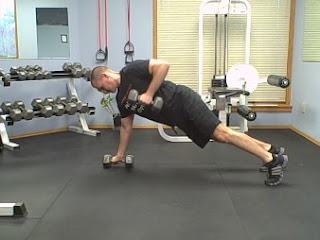I figured with the presidential elections and debates going on I thought it was a good time to debate about something worthwhile (not that the election/ debate is not but after a while they all sound like "blah, blah, blah.") This topic is one near and dear to your heart and career--Workouts for Fire Rescue Athletes. Over the last couple of months I've been writing about some of the more popular workouts seen in firehouses across the world. You can read about them here and here or listen to a great radio interview about this topic HERE.
I've received a ton of feedback about those articles both good and bad. One thing I have not done yet is to answer the highly debated question...."What is the best workout for Firefighters, EMTs and Paramedics (Fire Rescue Athletes)?. Is it CrossFit? P90X? Ladder 2 Workout? Insanity? Body for Life?
Without further delay, here is my answer (drum roll please)....
THEY ALL ARE....or at least can be.
I know this is a generic answer.
Bottom line is that there is no single perfect program for fire rescue athletes. We work in very uncertain situations and circumstances so we have to be ready for almost anything and no single workout program can prepare you for that (stay tuned for one that will). There are however some things that need to be thought of when evaluating a fire rescue based workout.
THEY ALL ARE....or at least can be.
I know this is a generic answer.
Bottom line is that there is no single perfect program for fire rescue athletes. We work in very uncertain situations and circumstances so we have to be ready for almost anything and no single workout program can prepare you for that (stay tuned for one that will). There are however some things that need to be thought of when evaluating a fire rescue based workout.
1. The program must be planned using sound periodization and science. The program must be planned using sound periodization and science. Training should follow a developmental approach or progression. This means there should be a hierarchy of training. First it is essential for the fire rescue athlete to develop a training base that should increase the body’s functional capacity. Once this is accomplished, the intensity of the exercise is increased to emphasize strength and muscular development. In more general terms, we can also say we develop stability, then strength, and finally power. Regardless of what the training program looks like, it cannot violate this developmental approach. This is one variable that CrossFit does not do, people are getting injured from performing too many presses or pulls or jumps without having a sound base.
2. The program MUST place a large amount of focus on Core Strength and Balance. During the course of their career, almost 50% of all fire rescue athletes will hurt their back
while on duty. Low back pain is the number one reason firefighters retire early. In order for a program to be effective, it must utilize exercises that focus on the developing the glutes, shoulder girdle, hamstrings, hips and abs. Notice that I didn't say anything about a "six pack" of abs. That is one of the cons of P90X, the program is more concerned about beach muscle than core strength.
3. The program needs to focus on cardiovascular conditioning and recovery. When you think of cardiovascular conditioning most people think of running or biking, which in most cases emphasizes aerobic conditioning. Fire Rescue athletes need to have a good level of aerobic fitness but cannot overlook the value of challenging the anaerobic systems. If you've ever humped a "charged" hose line up some stairs or dragged a victim or axed a roof open you realized the importance of anaerobic fitness. An effective Fire Rescue fitness program will set a good cardiovascular base then challenge the cardiovascular system with intervals. Intervals are one of the best way to simulate the high level of fitness required on the fire ground.
4. Check the blog for the rest. I can't give you all the reasons in one post, I have to keep you in suspense. My next post will have a couple more elements that a good Fire Rescue Workout should contain. In the meantime check out my FREE 28-day Quickstart Workout Program (which contains all the esse...).
Views: 686
Comment
© 2025 Created by fireeng.
Powered by
![]()



You need to be a member of Fire Engineering Training Community to add comments!
Join Fire Engineering Training Community